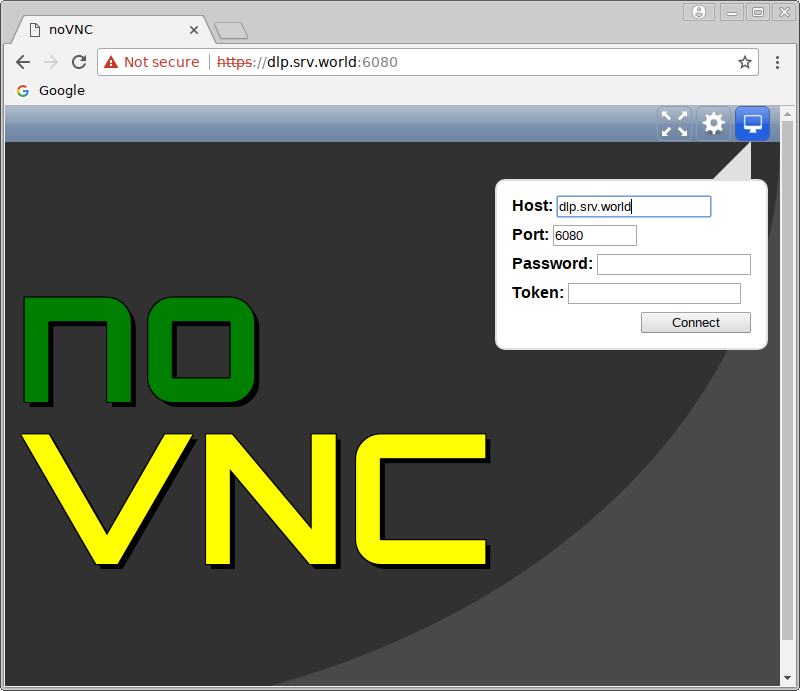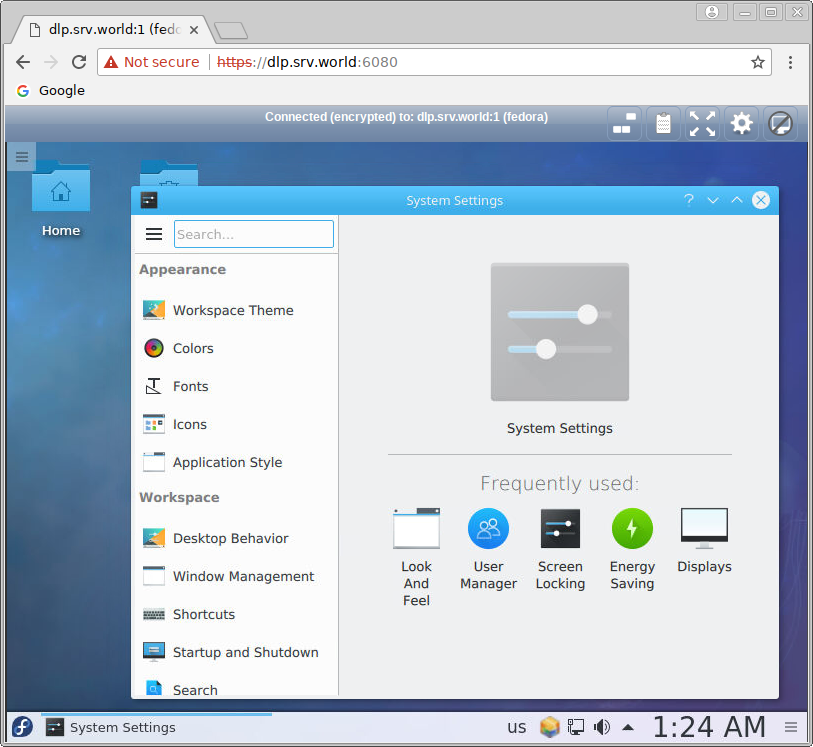|
Configure noVNC
2017/12/14 |
|
Install noVNC which is a VNC Client tool to connect to VNC server via Web Browser.
|
|
| [1] | Install some packages and create SSL certificates. |
|
[root@dlp ~]#
[root@dlp ~]# dnf -y install novnc python3-websockify python3-numpy cd /etc/pki/tls/certs [root@dlp certs]# openssl req -x509 -nodes -newkey rsa:2048 -keyout /etc/pki/tls/certs/novnc.pem -out /etc/pki/tls/certs/novnc.pem -days 365 Generating a 2048 bit RSA private key ..........................................+++ ..........................................+++ writing new private key to '/etc/pki/tls/certs/novnc.pem' ----- You are about to be asked to enter information that will be incorporated into your certificate request. What you are about to enter is what is called a Distinguished Name or a DN. There are quite a few fields but you can leave some blank For some fields there will be a default value, If you enter '.', the field will be left blank. -----Country Name (2 letter code) [AU]: JP # country State or Province Name (full name) [Some-State]: Hiroshima # state Locality Name (eg, city) []: Hiroshima # city Organization Name (eg, company) [Internet Widgits Pty Ltd]: GTS # company Organizational Unit Name (eg, section) []: Server World # department Common Name (eg, YOUR name) []: dlp.srv.world # server's FQDN Email Address []: xxx@srv.world # admin email [root@dlp ~]# chmod 644 /etc/pki/tls/certs/novnc.pem |
| [2] | If Firewalld is running, allow required port. |
|
[root@dlp ~]# firewall-cmd --add-port=6080/tcp --permanent success [root@dlp ~]# firewall-cmd --reload success |
| [3] |
Start VNC Server, refer to here (section [1]).
This example is based on that [fedora] user runs VNC server with [5901] port. |
| [4] | Start Websockify with the user who runs VNC server and proxying localhost:5901 on port 6080. |
|
[fedora@dlp ~]$ websockify -D --web=/usr/share/novnc/ --cert=/etc/pki/tls/certs/novnc.pem 6080 localhost:5901 WebSocket server settings: - Listen on :6080 - Flash security policy server - Web server. Web root: /usr/share/novnc - SSL/TLS support - Backgrounding (daemon) |
| [5] | Access to the [http://(server's hostname or IP address):6080/] from a client with web browser, then noVNC form is displayed like follows, Login with VNC password. |

|
| [6] | Just connected. It's possible to operate Fedora on Web browser. |

|